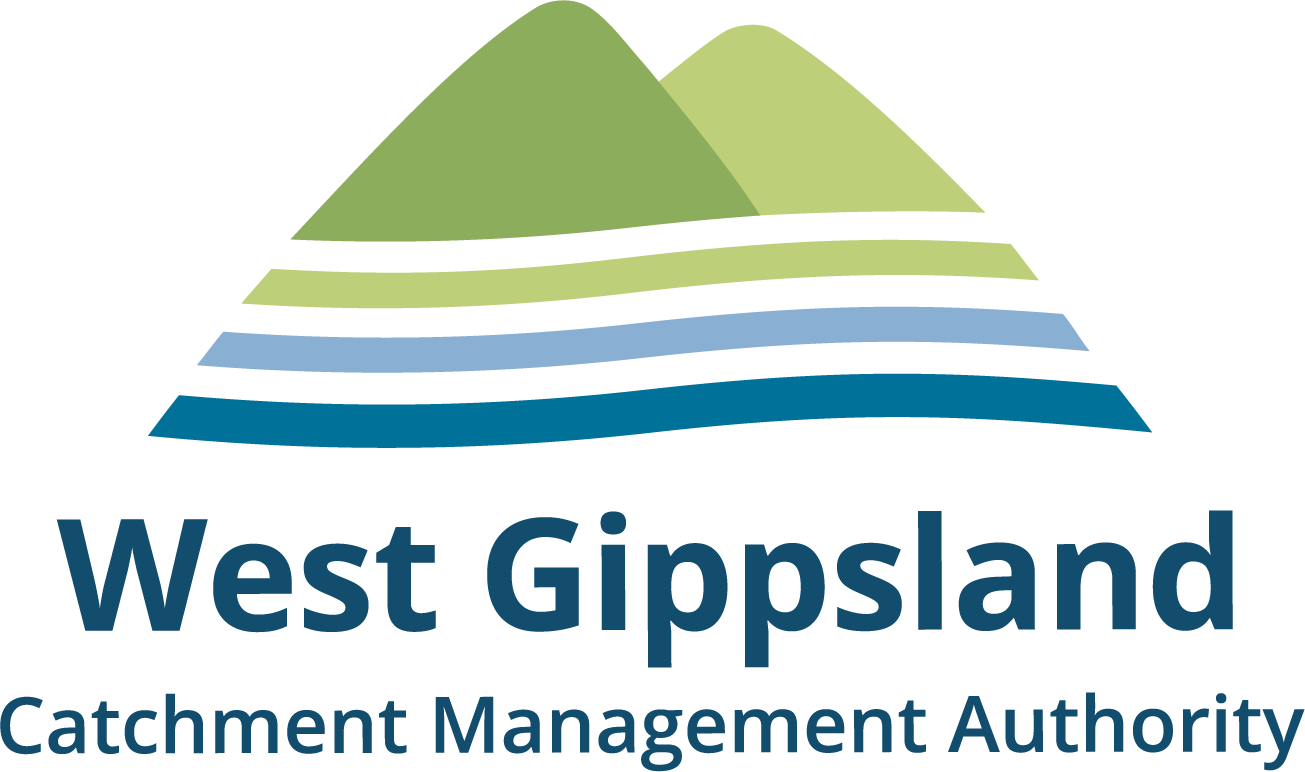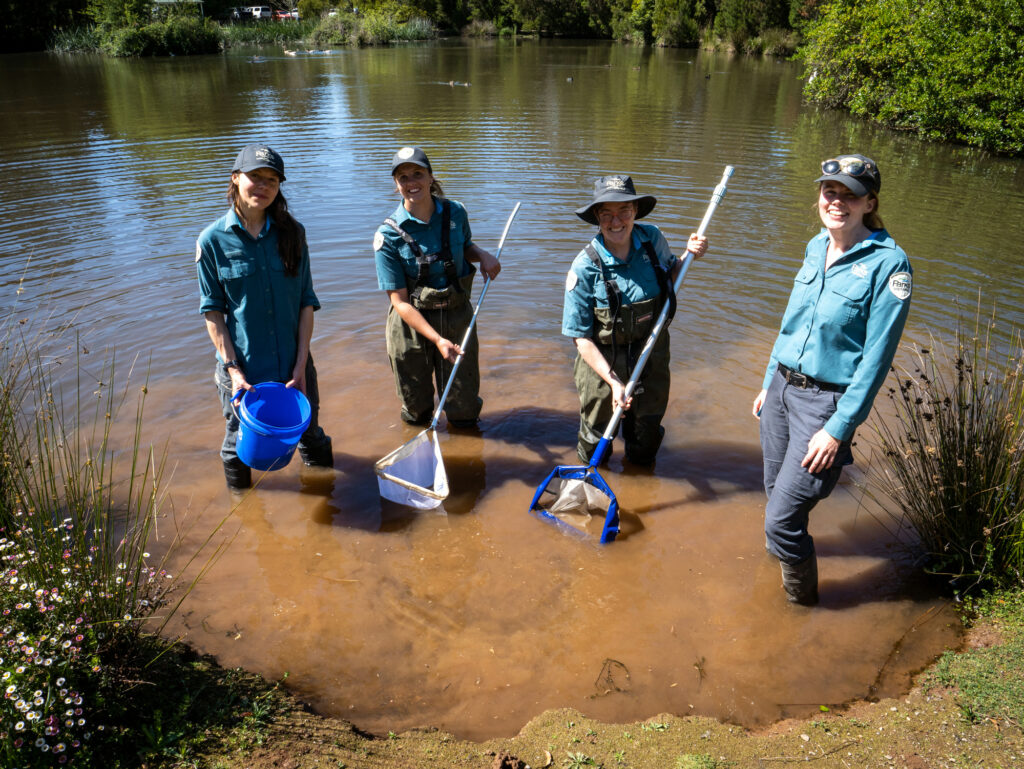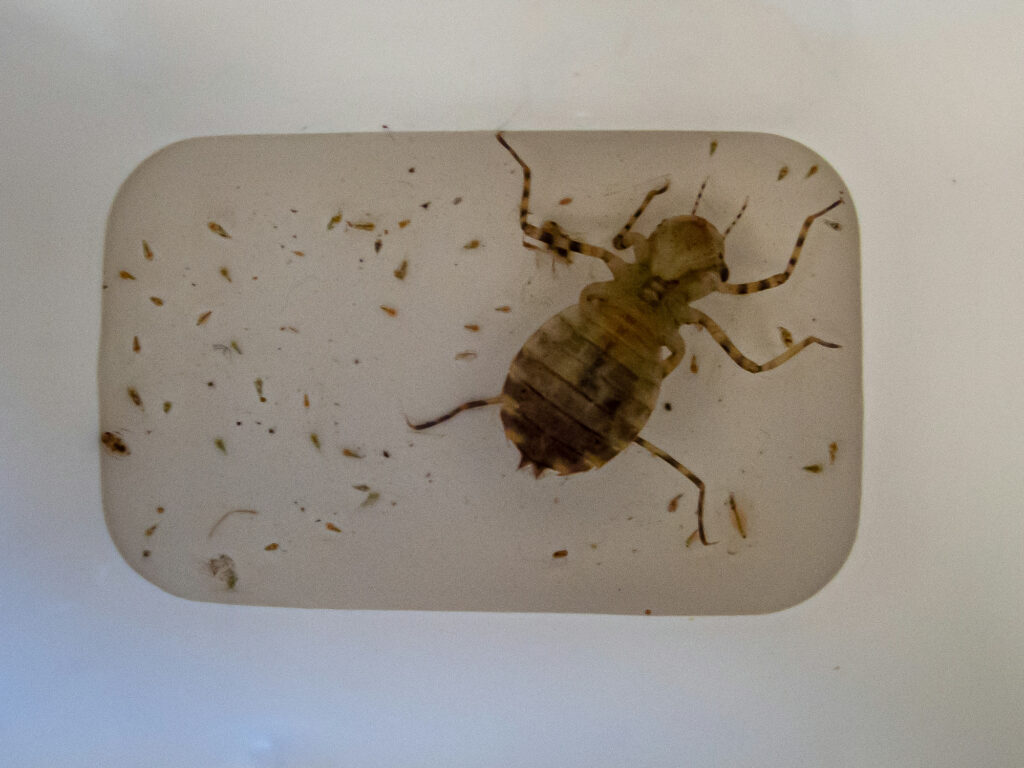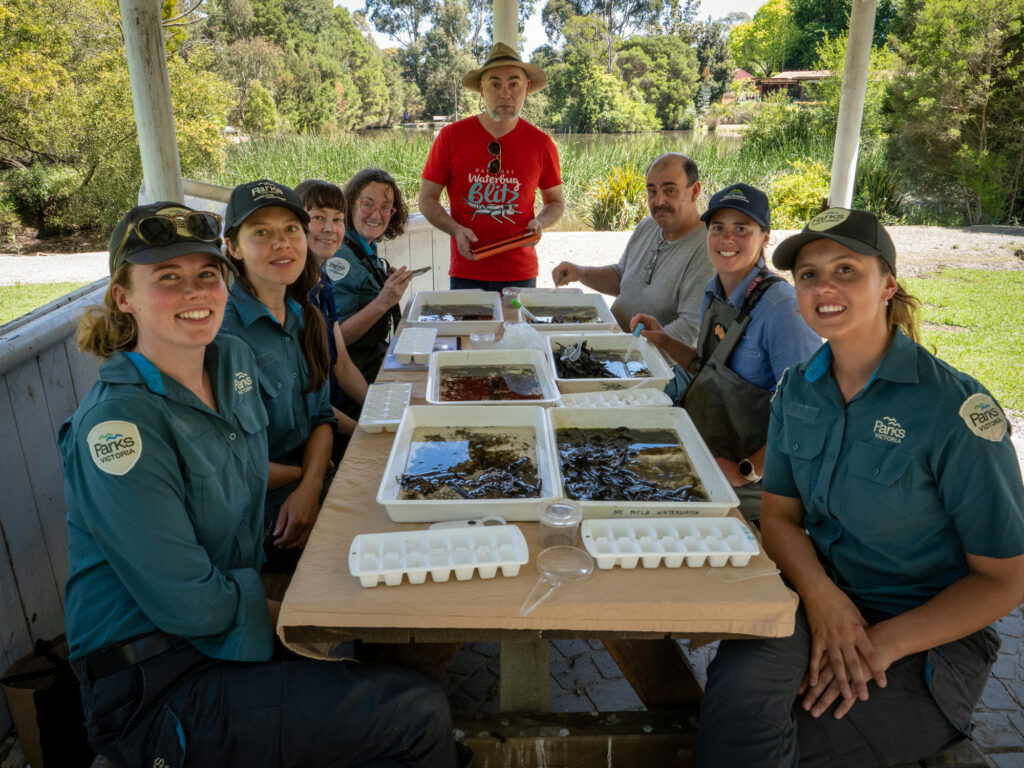Tiny creatures, mighty clues: how waterbugs help us understand waterway health
It was all about getting up close and personal with the tiny yet fascinating critters that live in waterways when West Gippsland CMA hosted a Waterbug Identification Training day last month.
Armed with nets, buckets and curiosity, West Gippsland CMA staff, Waterwatch volunteers and Parks Victoria rangers waded into Leongatha Wetlands collecting samples of mud and debris to analyse under the magnifying glass for the presence of waterbugs.
The session was part of the National Waterbug Blitz, a citizen science program that encourages people to investigate how healthy their local rivers, creeks or wetlands are by exploring and identifying the waterbugs they contain.
With guidance from freshwater ecologist and waterbug guru Dr John Gooderham, the group learned how to identify waterbugs using the Waterbug Identification App, which doubles as a survey tool for collecting valuable data about waterway health.
Freshwater macroinvertebrates (waterbugs) are a diverse group of insects, molluscs, crustaceans and other invertebrates (animals with no backbone) that live in different habitats in our waterways.
“They are a mixed bag of critters all jumbled together with not much in common besides living under water”, says John.
“There are sideswimmers, dragonflies, wormy things, maggoty things, animals that build their own houses (caddis) animals that vomit silk. There’s lot of stuff going on, mostly biting each other’s heads off, so it’s hard not to like them.”
Waterbug species have different sensitivities and tolerances to pollution and changing water conditions. Their presence or absence is an indicator of how healthy that waterway is.
“We sort of know what should be in a waterway, and when they aren’t there, it gives us a clue that something is wrong. If lots of them aren’t there it’s worse. And if there are none there you should probably wash your hands a lot,” says John.
Monitoring the health of West Gippsland’s waterways is something Waterwatch volunteers have been doing for many years.
“Our catchment is cared for by passionate Waterwatch volunteers who have been collecting water quality data for 30 years,” says West Gippsland CMA’s Waterwatch coordinator Tash Marty-Cripps.
“The Waterbug identification training was a fantastic opportunity for volunteers and partners to gain new skills and tools so they can continue their vital role caring for West Gippsland’s catchment.”






